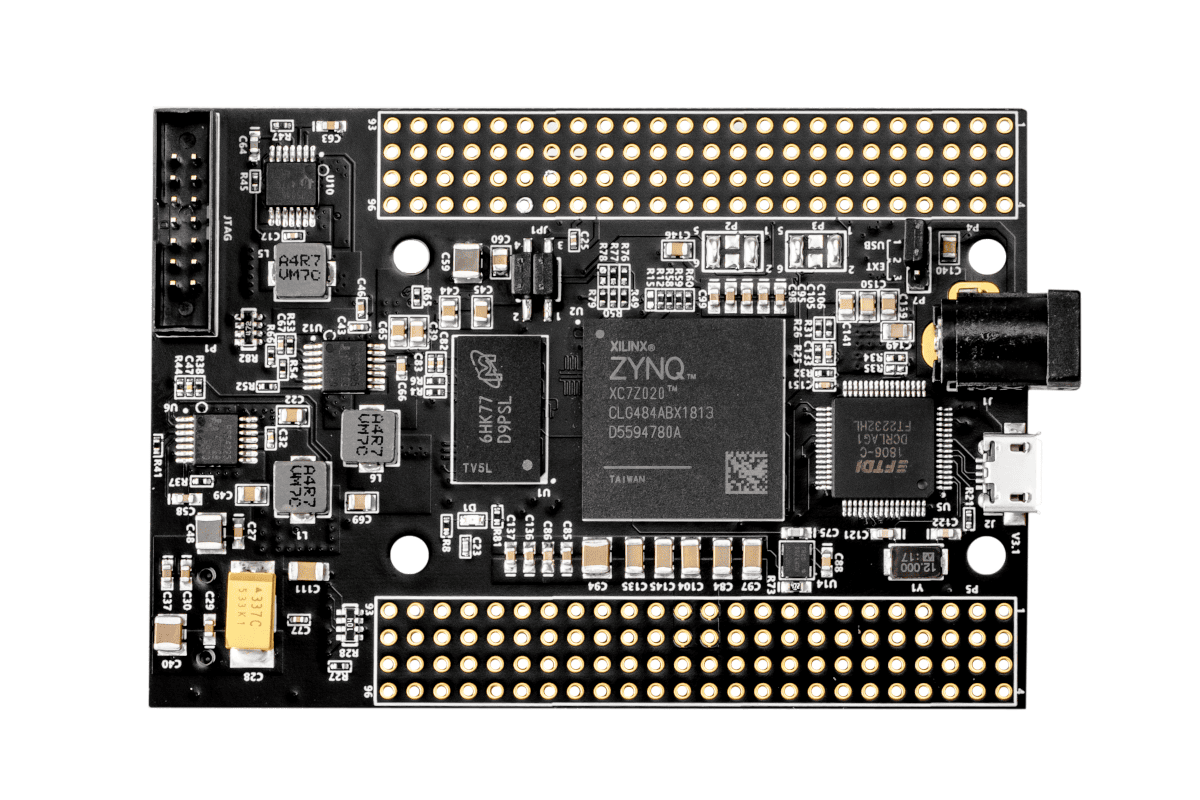Time: 2024-10-24 16:45:14View:
Field-Programmable Gate Arrays (FPGAs) have gained immense popularity due to their flexibility, power, and performance in various industries. One of the most exciting advancements in this field is the Zeqy FPGA, a powerful platform that integrates both a Processing System (PS) and a Programmable Logic (PL) architecture. This article will provide a comprehensive analysis of the Zeqy FPGA technology, its features, capabilities, and its wide-ranging applications across industries.
| Heading | Subheading |
|---|---|
| 1. Introduction to Zeqy FPGA | - What is Zeqy FPGA? - Importance of FPGA in Modern Technology |
| 2. Processing System (PS) Architecture in Zeqy FPGA | - ARM Processor Core - Memory Interfaces - Peripheral Interfaces |
| 3. Programmable Logic (PL) Architecture | - FPGA Resources - DSP Capabilities - Clock Management |
| 4. Key Features of Zeqy FPGA | - Security Features - Power Management - Advanced Features |
| 5. Development Tools for Zeqy FPGA | - Hardware Development - Software Development - Supported Programming Languages |
| 6. Application Domains of Zeqy FPGA | - Industrial Applications - Communications - Automotive - Medical and Scientific |
| 7. Performance Metrics of Zeqy FPGA | - Processing Performance - Power Consumption |
| 8. Design Considerations for Zeqy FPGA | - Design Methodology - System Integration - Verification and Validation |
| 9. Future Trends in Zeqy FPGA Technology | - Integration with AI and Machine Learning - Real-Time Processing and IoT Integration |
| 10. Getting Started with Zeqy FPGA | - Development Kits - Online Resources and Community Support |
| 11. FAQs About Zeqy FPGA | - Frequently Asked Questions on Zeqy FPGA |
Zeqy FPGA is a high-performance, flexible FPGA that integrates a powerful Processing System (PS) with programmable Programmable Logic (PL) to create a dynamic system-on-chip (SoC) architecture. This combination allows developers to implement complex applications that require both software programmability and hardware acceleration. By offering the ability to update functionality post-production, Zeqy FPGA provides an unparalleled level of adaptability in industries such as automotive, telecommunications, and industrial automation.
FPGAs are becoming increasingly important in modern electronics due to their reconfigurability and parallel processing capabilities. Unlike traditional Application-Specific Integrated Circuits (ASICs), which are hardwired for specific tasks, FPGAs can be reprogrammed to support different functionalities even after deployment, making them ideal for prototyping and evolving technologies like 5G, artificial intelligence (AI), and Internet of Things (IoT) systems.
The Processing System (PS) of Zeqy FPGA is built around a powerful dual-core ARM Cortex-A9 MPCore processor, delivering high processing performance while maintaining energy efficiency. This architecture is critical for applications requiring real-time processing and control logic.
The Programmable Logic (PL) in Zeqy FPGA enables customization of hardware functions through the use of logic blocks, interconnects, and embedded DSP resources. The PL is based on either Artix-7 or Kintex-7 FPGA fabric, known for their high performance and low power consumption.
Zeqy FPGA’s DSP resources include:
Security is a critical concern in today’s interconnected world, and Zeqy FPGA addresses this with:
Zeqy FPGA includes advanced power management features, allowing it to optimize energy usage:
Zeqy FPGA supports a variety of programming languages:
Zeqy FPGA's versatility makes it ideal for a wide range of industries:
Zeqy FPGA excels in motion control systems, industrial networking, and predictive maintenance, where real-time performance and adaptability are essential.
With the rise of 5G infrastructure and software-defined radio (SDR), Zeqy FPGA’s high-speed processing capabilities allow it to manage tasks such as network processing, protocol conversion, and packet processing efficiently.
Zeqy FPGA plays a vital role in ADAS (Advanced Driver Assistance Systems), infotainment, and sensor fusion, enabling real-time data processing from multiple sensors to improve vehicle safety and performance.
In medical imaging, patient monitoring, and scientific instruments, Zeqy FPGA's ability to handle high-speed data streams and perform real-time signal processing is invaluable.
Efficient hardware/software partitioning, IP reuse strategies, and careful performance optimization are key to achieving the best results on Zeqy FPGA. Designers can leverage tools like Vivado and Vitis to streamline this process.
Zeqy FPGA is well-positioned to play a major role in future technological advancements:
Zeqy FPGA is expected to further integrate AI accelerators, making it a powerful tool for edge AI applications and real-time inferencing in machine learning tasks.
As IoT and edge computing continue to grow, Zeqy FPGA’s ability to handle real-time processing while maintaining low power consumption will be essential in powering smart devices and systems.
For those new to Zeqy FPGA, various development kits are available that come with pre-installed tools and sample projects, allowing beginners to start experimenting with FPGA programming. Moreover, a wide range of online tutorials, forums, and webinars provide additional resources to help users learn the system.
Zeqy FPGA is widely used in industries such as automotive, communications, and industrial automation for real-time data processing and hardware acceleration.
Zeqy FPGA is programmed using hardware description languages like VHDL or Verilog, and it supports high-level languages like C/C++ through High-Level Synthesis (HLS).
Zeqy FPGA stands out due to its integrated ARM Processing System (PS) and Programmable Logic (PL), allowing for hybrid hardware-software designs that offer high flexibility and performance.
Zeqy FPGA includes AES-256 encryption, SHA-256 authentication, and tamper detection, ensuring robust security for sensitive applications.